Bicycle Street
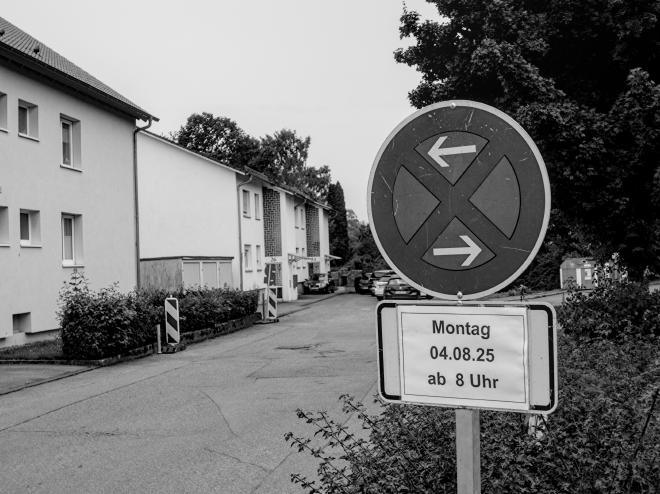
A shrill bell pierces the silence. A cyclist swerves to avoid a carelessly parked trailer – right in the middle of the freshly inaugurated bicycle street.
Markdorf has a traffic problem – anyone who drives through or lives in the town is well aware of it. Essentially, there are two main traffic arteries through town: the B33 between Ravensburg and Konstanz, and the L205 and L207 connecting Bermatingen to Friedrichshafen. Of course, traffic doesn’t strictly follow these veins but branches off and finds its own paths.
Today, I’m focusing on the side route of Grivitenstraße, Hahnstraße, and Eisenbahnstraße. My theory is that it has long been the unofficial bypass to escape gridlock on the main arteries. While speed traps were flashing along the L205 and B33, this side route was largely accepted as a “faster” alternative. Yes, half-hearted measures to reduce traffic speed were introduced, and parked cars contributed to ensuring that you couldn’t drive much faster than the permitted 30 km/h anyway.
All of that was set to change on August 4, 2025 – the so-called day zero of the bicycle street. It now stretches across Grivitenstraße, Hahnstraße, and Eugenienstraße. As far as I know, it is planned to continue into Schießstattweg.
The first reactions in the neighborhood came quickly. In a side branch of the new bicycle street, residents gathered spontaneously on the sidewalk that same day to share their first impressions. Snippets of conversation drifted through the summer air:
“I’m going straight to the town hall tomorrow to give them a piece of my mind!” – “We need to figure out how to turn our front yard into a parking spot so we can still park our cars.”
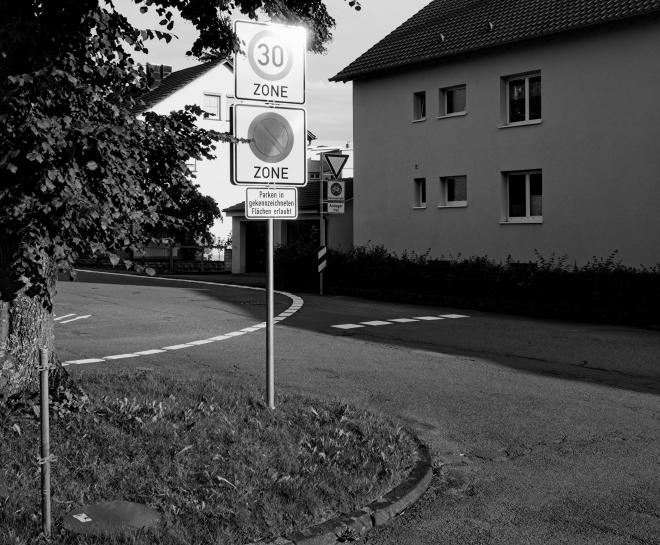
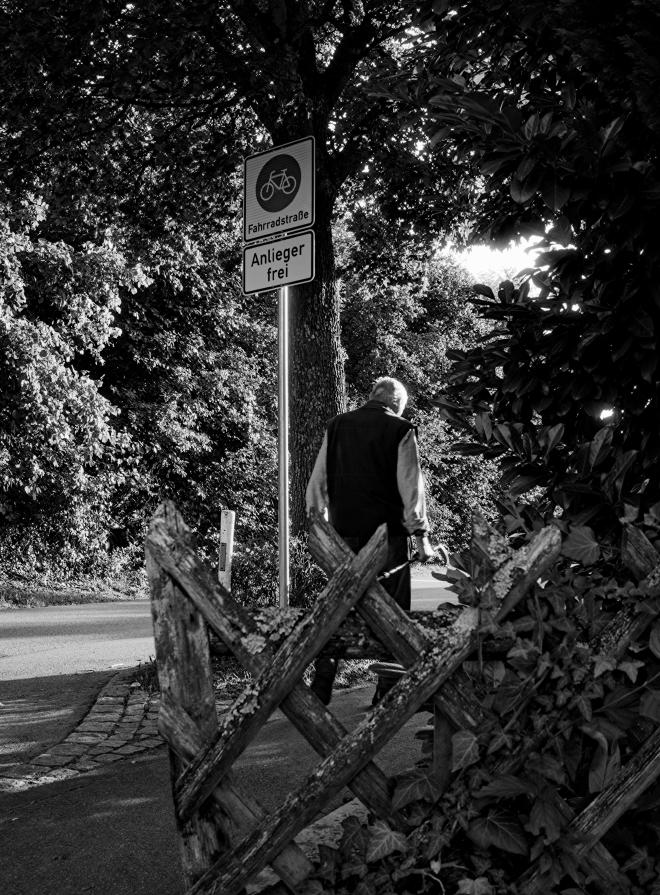
And then there was the ever-present trailer, standing in the middle of the street like a defiant statement. Someone suggested hauling it up to the Gherenberg – a guerrilla tactic against an owner who refused to be persuaded by either conversation or fines to move it elsewhere.
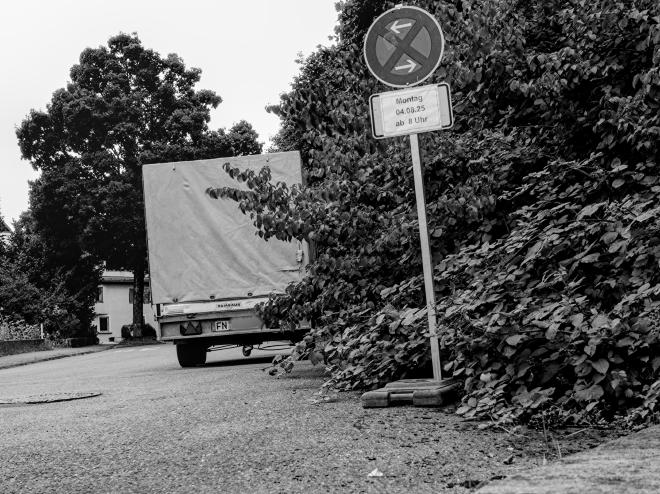
So, what do we do with this bicycle street? I think that’s exactly what the residents have been asking themselves. In the end, it’s a textbook example of change management – or how not to do it. According to some models, there are seven phases to go through.
7 Phases in Introducing a Bicycle Street in a Residential Area #
-
Shock
Reaction: “What? Soon hardly any cars will be allowed here?”
Measures:- Personal information letters for residents.
- Simple sketches: This is what the street will look like.
- Introduce contact person with photo and details.
-
Denial / Rejection
Reaction: “This doesn’t concern me.” or “They’re only doing this for a few cyclists.”
Measures:- Emphasize safety for children and the elderly.
- Show other examples from similar neighborhoods.
- Early, casual info meetings (e.g., at the playground or kiosk).
-
Resistance / Frustration
Reaction: “Where am I supposed to park now?” / “This is impractical.”
Measures:- Offer concrete solutions for daily life (e.g., short-term parking zones, delivery options).
- Moderated, open discussion rounds on site.
- Possibly a test phase with observation and feedback.
-
Valley of Tears
Reaction: “It used to be easier…”
Measures:- Regular updates: What’s done, what’s next?
- Highlight first visible improvements (quieter, safer, cleaner).
- Small actions, e.g., “Coffee at the kiosk” day or street bench for lingering.
-
Acceptance / Trial
Reaction: “Let’s see how it feels to ride here or sit outside.”
Measures:- Neighborhood activities: street flea market, play street, picnic benches.
- Involve kiosk or meeting points (e.g., discounts, ice cream day).
- Feedback box or online survey for improvements.
-
Realization / Insight
Reaction: “Actually, it’s more pleasant and safer now.”
Measures:- Publish before/after photos (notice board, online group).
- Share resident stories (“I now let my kids go to the kiosk on their own.”).
- Make usage by different groups visible.
-
Integration / Commitment
Reaction: The bicycle street becomes part of daily life, and many wouldn’t want to lose it.
Measures:- Regular neighborhood meetings or street festivals.
- Jointly organize upkeep and beautification (flower pots, benches).
- Use the project as an example for other streets.
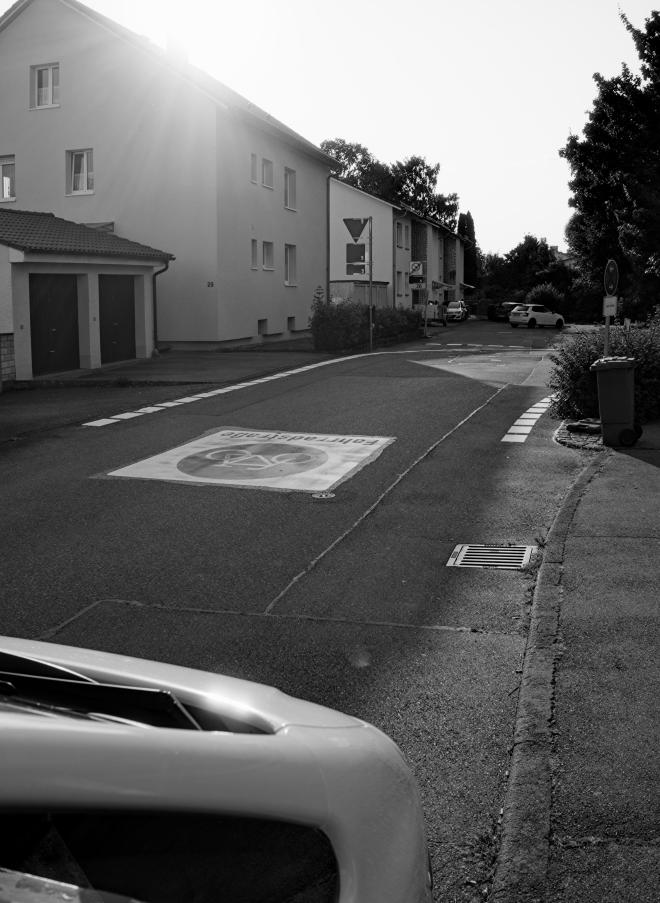
The proposed measures were only partially implemented – at least I only received the information in the current edition of the municipal bulletin KW 32–34/2025. I am affected, but not a direct resident.
How do I feel about it? I’m still somewhere between phase 4 and 5. I can see the benefits: traffic seems to have decreased, although you can still spot a few hardliners ignoring the parking ban outside marked areas, or out-of-towners generously interpreting “residents only.”
Personally, I think it will ultimately help the residents. In the long run, traffic on these detour routes should decrease, making the main roads even less attractive – or new back roads might emerge. And perhaps that stubbornly parked trailer from the beginning of this story will one day be just a memory of the early days of the bicycle street.
Note: I assume no liability for the content of external links. The operators of the linked pages are solely responsible for their content.